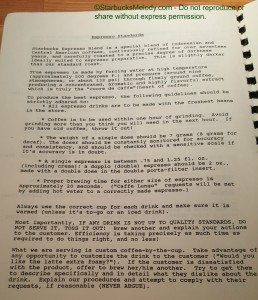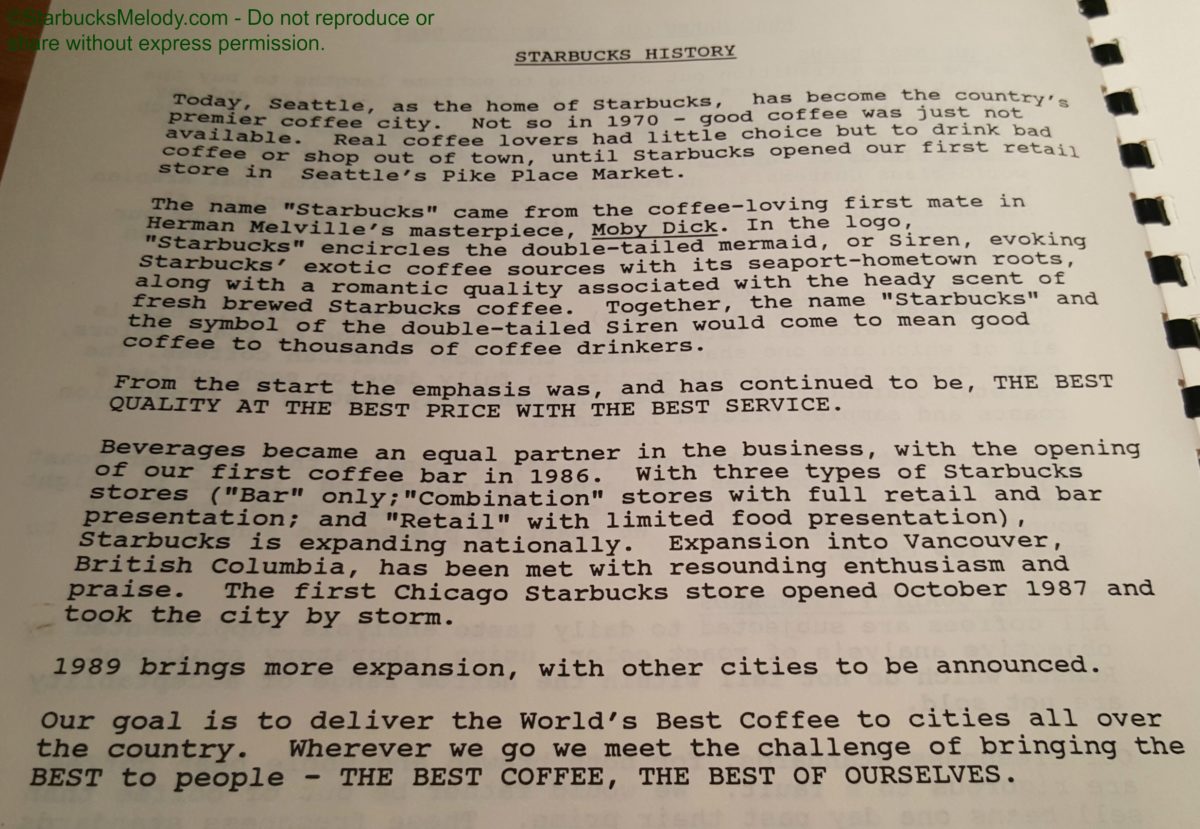I recently acquired a Starbucks training manual, which dates from 1989. For throwback Thursday, I give you a few pages of that booklet. It’s interesting but I don’t think the goals of Starbucks have changed since 1989. There’s no doubt, the Seattle headquarters still wants great drinks being served by friendly, knowledgeable, and professional partners.
Have a look:
 If you like learning about Starbucks of yesteryear, I recommend these past articles:
If you like learning about Starbucks of yesteryear, I recommend these past articles:
1992: Pike Place Market Cookbook – The pages about Starbucks.
Spotlight on Breakfast Blend: Milder Dimensions.
Flashback to 1999: Joe Magazine by Starbucks.
Starbucks history lesson: Bottled Mazagran.
The first Starbucks annual shareholder’s report: 1992 report.
If you want to see more from this 1989 Starbucks training book, here is more:
Related posts
5 Comments
Leave a Reply Cancel reply
You must be logged in to post a comment.
Sponsors
Recent Comments
- DEVIN on Compostable Straws Land in Seattle Starbucks Stores
- coffeebeanz on Why do you go to Starbucks less often? (If that’s true for you)
- Willi on You can now buy a Siren statue: $6,000
- Willi on A major revamp of your drink recipe: Testing syrup extracts and cane sugar
- Skip on Why do you go to Starbucks less often? (If that’s true for you)










Although I love learning about the new things vintage is where I’m at. I LOVE all things vintage. This is very cool to me.
@Lisa Waller – Me too! The kinds of articles that get a lot of comments are things like Starbucks For Life, but I so love all things Starbucks vintage. It’s fascinating the philosophies that founded Starbucks – and still exist today!
Vintage is the best. I love finding a store that still has some of the old posters. There was a Yirgacheffe one was my favorite and hung in a local store for years. Recently new posters were brought in and the Yirgacheffe one is gone. So sad.
That manual reads as though it was written by Howard. Great find and thanks for sharing.
I trained in 2006 and my manual was computerized writing but not typed like tgis. Alot bulkier than today’s tiny training books